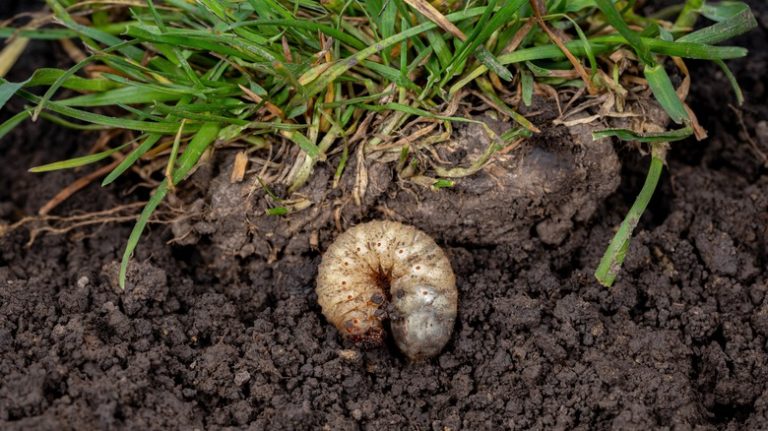Beating the summer heat can be especially hard to do in a wide-open backyard that is severely lacking in good shade. You might have the best barbecue recipe on the block, but the neighbors won’t be too happy if they’re roasting in the sun while trying to enjoy it. Pergolas and gazebos can be expensive and difficult to install, and there are only so many picnic table umbrellas you can get away with. One of the best, all-natural, and attractive permanent solutions is to invest in wide-canopied shade trees. As noted by the Arbor Day Foundation, there are many options when choosing trees that bring both shade and beauty to an empty yard or open garden. Some trees take years to mature to a large enough size to create a viable amount of shade. However, there are plenty that will grow fast and get the job in no time.
Tall shade trees are a vital part of any finished landscape and their presence will bring a serene sense of calm to your backyard. Where else are you going to hang a hammock and relax with a good book other than between the branches of two stately trees? If you’ve got available space, keep reading as we round up the best fast-growing trees to provide those sought-after shady spots that will guarantee more fun and relaxation outdoors, even when it’s super hot!
Weeping willows
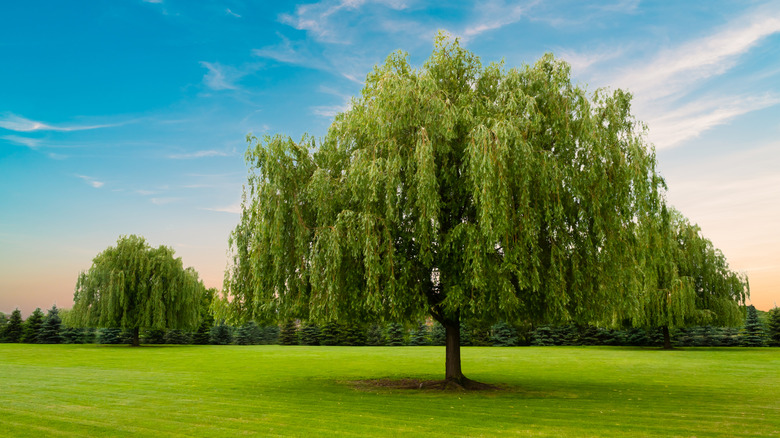
Salix babylonica, or the mighty weeping willow, is an excellent choice for its ability to grow a whopping 6 to 8 feet in a single year. According to Fast Growing Trees, weeping willows will grow just as wide as they do tall, capping out at 50 feet in each direction. What truly sets these gorgeous trees apart from all others is the graceful sweep of their branches that could lull anyone into a state of chilled peacefulness. In fact, these trees are so well-loved that including them in your landscape design could potentially boost the overall value of your home. Imagine growing a weeping willow next to a pond in your yard. In a few short years, it will be large enough to create a sitting area with a full blanket of shade cover, making it the ideal location to install a bench and sip iced tea while listening to the birds.
Weeping willows grow naturally in wet areas close to lakes and rivers, but they are adaptable to a wide range of environmental conditions. Overall, they are easy to grow throughout most of the continental United States, so don’t be afraid to add a touch of drama to your yard with a Salix babylonica. According to the Arbor Day Foundation, the weeping willow provided shade for the likes of Napoleon while he was exiled and cuttings from the willow he was buried under have been cherished by his fans all around the globe.
Oak trees
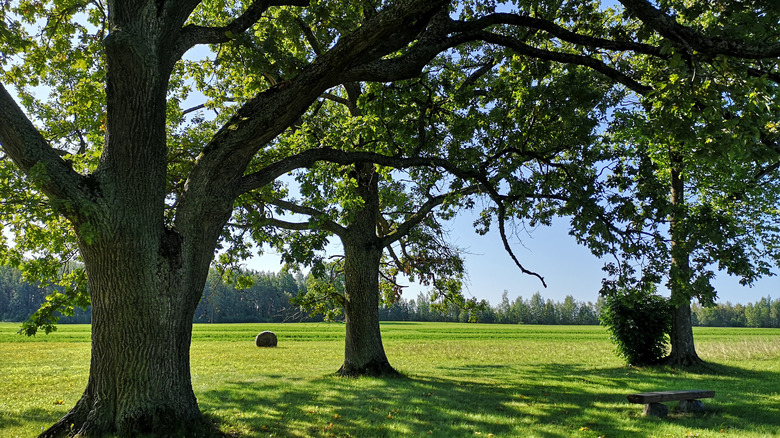
Not all oak trees are the same and the Arbor Day Foundation classifies the Quercus rubra variety as a national treasure. And who could disagree? Commonly known as the northern red oak, this tree grows tall and regal, reaching a maximum height of 75 feet. With a growth rate of up to 24 inches per year, the canopy of this enormous tree will spread over a wide area to create an abundance of shade during the summer. Then, as fall approaches, you can watch as it morphs into an absolute showstopper, with leaves that turn shades of crimson red, orange, and bright yellow. It is also a sturdy tree that would offer solid branches for hammocks or tire swings and the like.
Since oak trees can handle low levels of pollution as well as hard-packed soil, the northern red oak is known for its ability to grow well in urban environments. This, perhaps, is why it was named the state tree of New Jersey. Oak trees also produce acorns that feed all sorts of wildlife from blue jays to squirrels and even black bears. It keeps on feeding right through winter too, by offering twigs and buds that are particularly enjoyed by deer.
Maple trees
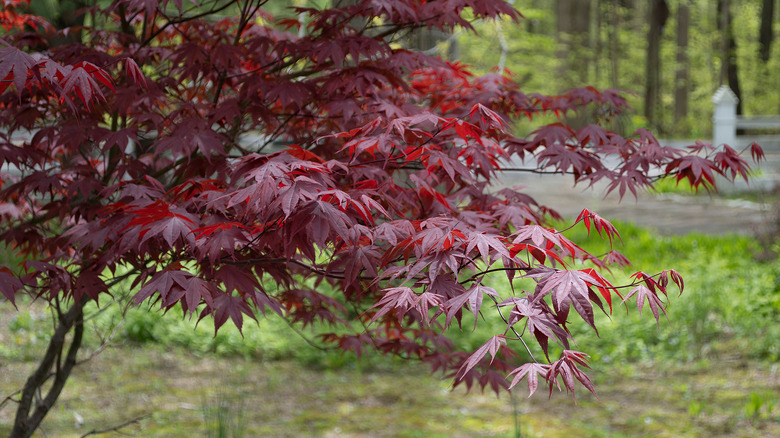
Emilio P/Shutterstock
Slightly smaller than the northern red oak, yet still a solid option, the red sunset maple will top out at 50 feet tall with a maximum canopy spread of 35 feet. That’s plenty of room to arrange a bench or some picnic tables for your next backyard shindig. Native to North America, the sunset maple is bird-friendly and can tolerate nutrient-deficient soil.
The plant care experts at Monrovia explain that these trees grow well in USDA hardiness zones three through nine. That enormous growth area makes up for most of the United States. In fact, they are extremely cold-hardy and really only have trouble surviving in tropical climates, consequently, if you’re in South Florida, the red sunset maple may not be for you. But just about anywhere else, go for it! As with the northern red oak, you’ll enjoy pleasant shade throughout the hot, sticky summer followed by a stunning leaf spectacle when fall rolls around.
Catalpa trees
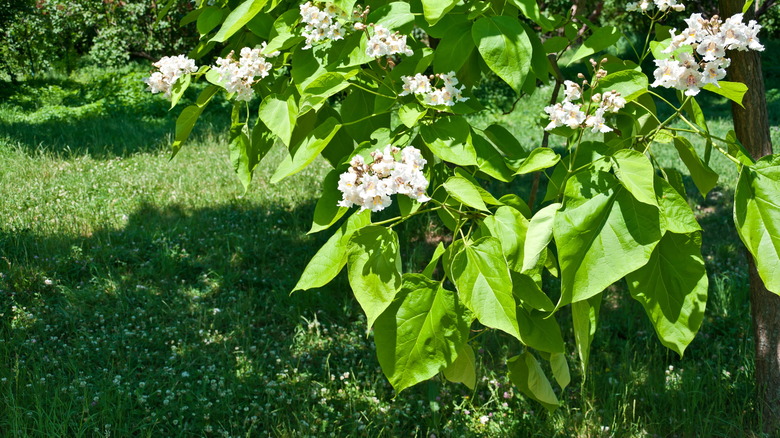
All for you friend/Shutterstock
There are two options when it comes to catalpa trees: southern and northern. As the larger of the two, the Arbor Day Foundation recommends the northern variety, or Catalpa speciosa, for the best shade. This tree has a slightly smaller growth range than some other shade trees but will do well in hardiness zones four through eight. Their wood is resistant to rot and the trees can tolerate a wide range of soil conditions. The main benefit of the catalpa is its distinctive foliage with large green leaves that are shaped like hearts. Its trunk and branches often grow in twists and turns and at the end of each spring, it will delight you with gorgeous white blooms that attract hummingbirds and bees.
The northern catalpa is also referred to as a cigar tree, a caterpillar tree, or an Indian bean tree. According to Fine Gardening, it may be difficult to find in garden centers, so you may need to purchase one online. When it’s time to plant your tree in the yard, leave a lot of surrounding space for it to truly show off its greenery. What’s more, the catalpa tree even has its own bug! The sphinx caterpillar, scientifically called Ceratomia catalpae, will only consume the leaves of northern or southern catalpa trees. According to some southerners, these caterpillars make the best bait in town, however, left on the tree, they can de-leaf a large catalpa in just two weeks.
Birch trees
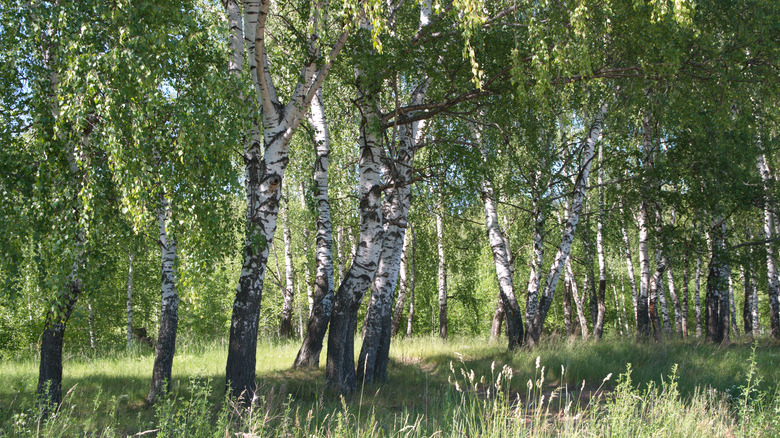
aniana/Shutterstock
Finally, let’s not forget birch trees. The fine folks at Gardner’s Path put both the river and paper varieties at the top of their list of fast-growing shade trees. With a maximum height of 70 feet plus a 60-foot wide canopy spread, only choose the larger river birch for your yard if you have an abundance of space to fill. Otherwise, the paper birch (or white birch) may be your safest bet, which can grow equally as tall but will only spread to about 35 feet. Birch trees can be grown as a solo specimen, but one of the reasons they are a great option for shade is that they do better when grown in clusters. Not only does this provide more overall shade, but it ensures that the trees will basically replace themselves with new growth each time an old tree dies. You can think of it as a perennial plant that keeps shooting up new stalks and flowers.
In a landscape, you can use a row of birch trees to create a privacy barrier or line a walkway. HGTV explains that these fast growers demand a lot of sunlight but also desire moist soil that will stay relatively cool. Planting them on either the east or north side of your yard may aid this by allowing your house to provide the necessary shade in the latter part of the day. Both river and paper birch trees can grow up to 24 inches per year.

